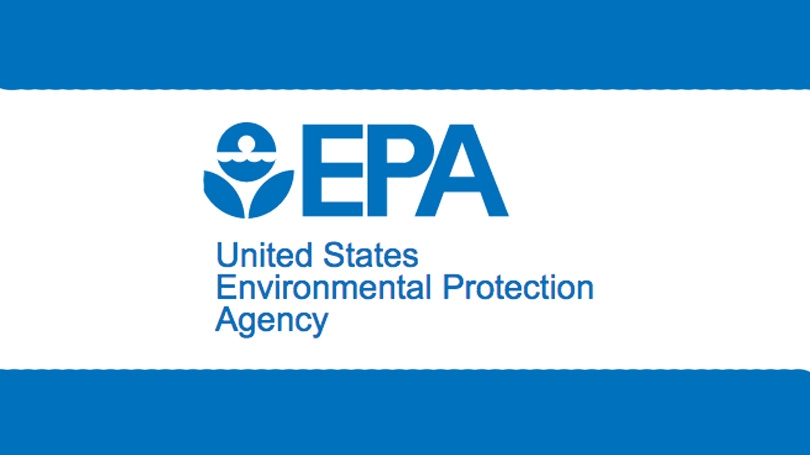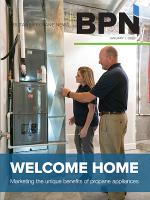Monday, January 20, 2020
(January 20, 2020) — The U.S. Environmental Protection Agency (EPA) is soliciting pre-proposal comments on a rulemaking effort known as the Cleaner Trucks Initiative (CTI). This Advance Notice of Proposed Rule (ANPR) describes EPA’s plans for a rulemaking that would establish new emission standards for oxides of nitrogen (NOx) for highway heavy-duty engines. It also describes opportunities to streamline and improve certifcation procedures to reduce costs for engine manufacturers. The EPA is seeking input on this effort from the public, including all interested stakeholders.
 The purpose of the CTI is to update EPA emissions standards for NOx and potentially other criteria pollutants from highway heavy-duty vehicles and engines. In this ANPR, EPA provides stakeholders with our early thinking on CTI principles and program elements and solicits stakeholder input on preliminary plans for analyses and data to inform the upcoming notice of proposed rulemaking (NPRM).
The purpose of the CTI is to update EPA emissions standards for NOx and potentially other criteria pollutants from highway heavy-duty vehicles and engines. In this ANPR, EPA provides stakeholders with our early thinking on CTI principles and program elements and solicits stakeholder input on preliminary plans for analyses and data to inform the upcoming notice of proposed rulemaking (NPRM).
Streamlining and Modernizing Heavy-Duty Emissions Regulations.
EPA is actively exploring opportunities to streamline our requirements, while ensuring no loss in protection for public health and the environment. For instance, we are working with industry partners to develop a more cost-effcient path for manufacturers to demonstrate the durability of their emission control systems. The ANPR describes several other areas that EPA is evaluating for streamlining and modernization, and requests comment on additional opportunities we could consider.
Improving Real-World Emissions Testing. Today’s in-use testing standards require manufacturers to collect emissions data from heavy-duty vehicles on the road in the real world. Our analysis suggests there may be great potential to improve in-use performance by considering a broader range of engine operation when we evaluate in-use compliance. The ANPR describes our current thinking on potential updates to the in-use testing program and requests comment and data on all aspects of this topic.
Updating Laboratory Test Cycles for Heavy-Duty Vehicles. Based on our early analysis of heavy-duty diesel engine technologies, we expect today’s advanced diesel technologies are capable of substantial emission reductions on current laboratory test cycles. We are considering an additional laboratory-based test cycle that would evaluate an engine’s control of emissions during conditions not emphasized in today’s test cycles, such as low-speed, or low-load operation. The ANPR describes our current thinking and requests comment on this topic.
Providing Additional Assurance of Emissions Controls through Extended Useful Life and Emissions Warranty Provisions. Our current analysis shows that heavy-duty engines operate well beyond EPA’s current defnition of the engine’s regulatory full useful life. EPA’s current emission warranty provisions cover only a small fraction of an engine’s operational life. In order to ensure that emission controls continue to perform over a period more refective of the real-world operational life of heavy-duty engines, we are evaluating longer mileage requirements for regulatory useful life and emissions warranty. The ANPR describes our early thinking on this topic and asks for stakeholder input.
Working Towards a 50-State Approach for Heavy-Duty Vehicles. EPA is closely following the technical work initiated by the California Air Resources Board (CARB) to update their heavy-duty vehicle and engine programs under a Heavy-Duty NOx Omnibus proposal. The ANPR provides an opportunity for comment on the extent to which EPA should adopt provisions similar to those expected in the CARB Omnibus proposal.
Public Participation Opportunities:
The EPA welcomes your input on this Advance Notice. Comments will be accepted for 30 days following publication in the Federal Register. All comments should be identifed by Docket ID No. EPA-HQ-OAR-2019-0055 and submitted at www.regulations.gov. For additional submission methods, please visit www.epa.gov/dockets/commenting-epa-dockets.
For More Information:
You can access the ANPR and related documents on EPA’s Cleaner Trucks Initiative webpage at:
 The purpose of the CTI is to update EPA emissions standards for NOx and potentially other criteria pollutants from highway heavy-duty vehicles and engines. In this ANPR, EPA provides stakeholders with our early thinking on CTI principles and program elements and solicits stakeholder input on preliminary plans for analyses and data to inform the upcoming notice of proposed rulemaking (NPRM).
The purpose of the CTI is to update EPA emissions standards for NOx and potentially other criteria pollutants from highway heavy-duty vehicles and engines. In this ANPR, EPA provides stakeholders with our early thinking on CTI principles and program elements and solicits stakeholder input on preliminary plans for analyses and data to inform the upcoming notice of proposed rulemaking (NPRM).Streamlining and Modernizing Heavy-Duty Emissions Regulations.
EPA is actively exploring opportunities to streamline our requirements, while ensuring no loss in protection for public health and the environment. For instance, we are working with industry partners to develop a more cost-effcient path for manufacturers to demonstrate the durability of their emission control systems. The ANPR describes several other areas that EPA is evaluating for streamlining and modernization, and requests comment on additional opportunities we could consider.
Improving Real-World Emissions Testing. Today’s in-use testing standards require manufacturers to collect emissions data from heavy-duty vehicles on the road in the real world. Our analysis suggests there may be great potential to improve in-use performance by considering a broader range of engine operation when we evaluate in-use compliance. The ANPR describes our current thinking on potential updates to the in-use testing program and requests comment and data on all aspects of this topic.
Updating Laboratory Test Cycles for Heavy-Duty Vehicles. Based on our early analysis of heavy-duty diesel engine technologies, we expect today’s advanced diesel technologies are capable of substantial emission reductions on current laboratory test cycles. We are considering an additional laboratory-based test cycle that would evaluate an engine’s control of emissions during conditions not emphasized in today’s test cycles, such as low-speed, or low-load operation. The ANPR describes our current thinking and requests comment on this topic.
Providing Additional Assurance of Emissions Controls through Extended Useful Life and Emissions Warranty Provisions. Our current analysis shows that heavy-duty engines operate well beyond EPA’s current defnition of the engine’s regulatory full useful life. EPA’s current emission warranty provisions cover only a small fraction of an engine’s operational life. In order to ensure that emission controls continue to perform over a period more refective of the real-world operational life of heavy-duty engines, we are evaluating longer mileage requirements for regulatory useful life and emissions warranty. The ANPR describes our early thinking on this topic and asks for stakeholder input.
Working Towards a 50-State Approach for Heavy-Duty Vehicles. EPA is closely following the technical work initiated by the California Air Resources Board (CARB) to update their heavy-duty vehicle and engine programs under a Heavy-Duty NOx Omnibus proposal. The ANPR provides an opportunity for comment on the extent to which EPA should adopt provisions similar to those expected in the CARB Omnibus proposal.
Public Participation Opportunities:
The EPA welcomes your input on this Advance Notice. Comments will be accepted for 30 days following publication in the Federal Register. All comments should be identifed by Docket ID No. EPA-HQ-OAR-2019-0055 and submitted at www.regulations.gov. For additional submission methods, please visit www.epa.gov/dockets/commenting-epa-dockets.
For More Information:
You can access the ANPR and related documents on EPA’s Cleaner Trucks Initiative webpage at:
- www.epa.gov/regulations-emissions-vehicles-and-engines/cleaner-trucks-initiative


